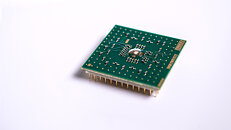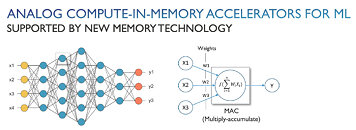Apr 6th, 2025 00:08 EDT
change timezone
Latest GPU Drivers
New Forum Posts
- Rx5700 Burned hdmi? (8)
- gpu heirarchy/performance/benchmarks- whos lying? (25)
- Server Project (348)
- The coffee and tea drinkers club. (243)
- need help choosing an upgrade (8)
- Game Soundtracks You Love (1033)
- [Intel AX1xx/AX2xx/AX4xx/AX16xx/BE2xx/BE17xx] Intel Modded Wi-Fi Driver with Intel® Killer™ Features (304)
- 9800x3d for 1440p gaming? (21)
- Rtx 3060 laptop no longer working after wrong vbios flash (21)
- Sapphire RX9070XT Nitro+ fan and high temperature problem (3)
Popular Reviews
- ASUS Prime X870-P Wi-Fi Review
- PowerColor Radeon RX 9070 Hellhound Review
- Corsair RM750x Shift 750 W Review
- UPERFECT UStation Delta Max Review - Two Screens In One
- DDR5 CUDIMM Explained & Benched - The New Memory Standard
- Upcoming Hardware Launches 2025 (Updated Apr 2025)
- Sapphire Radeon RX 9070 XT Pulse Review
- Sapphire Radeon RX 9070 XT Nitro+ Review - Beating NVIDIA
- AMD Ryzen 7 9800X3D Review - The Best Gaming Processor
- Pwnage Trinity CF Review
Controversial News Posts
- MSI Doesn't Plan Radeon RX 9000 Series GPUs, Skips AMD RDNA 4 Generation Entirely (146)
- Microsoft Introduces Copilot for Gaming (124)
- AMD Radeon RX 9070 XT Reportedly Outperforms RTX 5080 Through Undervolting (119)
- NVIDIA Reportedly Prepares GeForce RTX 5060 and RTX 5060 Ti Unveil Tomorrow (115)
- NVIDIA GeForce RTX 5060 Ti 16 GB SKU Likely Launching at $499, According to Supply Chain Leak (102)
- Over 200,000 Sold Radeon RX 9070 and RX 9070 XT GPUs? AMD Says No Number was Given (100)
- NVIDIA GeForce RTX 5050, RTX 5060, and RTX 5060 Ti Specifications Leak (97)
- Nintendo Switch 2 Launches June 5 at $449.99 with New Hardware and Games (91)
Thursday, July 9th 2020

Imec and GLOBALFOUNDRIES Announce Breakthrough in AI Chip on IoT Edge Devices
Imec, a world-leading research and innovation hub in nanoelectronics and digital technologies, and GLOBALFOUNDRIES (GF ), the world's leading specialty foundry, today announced a hardware demonstration of a new artificial intelligence chip. Based on imec's Analog in Memory Computing (AiMC) architecture utilizing GF's 22FDX solution, the new chip is optimized to perform deep neural network calculations on in-memory computing hardware in the analog domain. Achieving record-high energy efficiency up to 2,900 TOPS/W, the accelerator is a key enabler for inference-on-the-edge for low-power devices. The privacy, security and latency benefits of this new technology will have an impact on AI applications in a wide range of edge devices, from smart speakers to self-driving vehicles.Since the early days of the digital computer age, the processor has been separated from the memory. Operations performed using a large amount of data require a similarly large number of data elements to be retrieved from the memory storage. This limitation, known as the von Neumann bottleneck, can overshadow the actual computing time, especially in neural networks - which depend on large vector matrix multiplications. These computations are performed with the precision of a digital computer and require a significant amount of energy. However, neural networks can also achieve accurate results if the vector-matrix multiplications are performed with a lower precision on analog technology.
To address this challenge, imec and its industrial partners in imec's industrial affiliation machine learning program, including GF, developed a new architecture which eliminates the von Neumann bottleneck by performing analog computation in SRAM cells. The resulting Analog Inference Accelerator (AnIA), built on GF's 22FDX semiconductor platform, has exceptional energy efficiency. Characterization tests demonstrate power efficiency peaking at 2,900 tera operations per second per watt (TOPS/W). Pattern recognition in tiny sensors and low-power edge devices, which is typically powered by machine learning in data centers, can now be performed locally on this power-efficient accelerator.
"The successful tape-out of AnIA marks an important step forward toward validation of Analog in Memory Computing (AiMC)," said Diederik Verkest, program director for machine learning at imec. "The reference implementation not only shows that analog in-memory calculations are possible in practice, but also that they achieve an energy efficiency ten to hundred times better than digital accelerators. In imec's machine learning program, we tune existing and emerging memory devices to optimize them for analog in-memory computation. These promising results encourage us to further develop this technology, with the ambition to evolve towards 10,000 TOPS/W".
"GlobalFoundries collaborated closely with imec to implement the new AnIA chip using our low-power, high-performance 22FDX platform," said Hiren Majmudar, vice president of product management for computing and wired infrastructure at GF. "This test chip is a critical step forward in demonstrating to the industry how 22FDX can significantly reduce the power consumption of energy-intensive AI and machine learning applications."
Looking ahead, GF will include AiMC as a feature able to be implemented on the 22FDX platform for a differentiated solution in the AI market space. GF's 22FDX employs 22nm FD-SOI technology to deliver outstanding performance at extremely low power, with the ability to operate at 0.5 Volt ultralow power and at 1 pico amp per micron for ultralow standby leakage. 22FDX with the new AiMC feature is in development at GF's state-of-the-art 300 mm production line at Fab 1 in Dresden, Germany.
To address this challenge, imec and its industrial partners in imec's industrial affiliation machine learning program, including GF, developed a new architecture which eliminates the von Neumann bottleneck by performing analog computation in SRAM cells. The resulting Analog Inference Accelerator (AnIA), built on GF's 22FDX semiconductor platform, has exceptional energy efficiency. Characterization tests demonstrate power efficiency peaking at 2,900 tera operations per second per watt (TOPS/W). Pattern recognition in tiny sensors and low-power edge devices, which is typically powered by machine learning in data centers, can now be performed locally on this power-efficient accelerator.
"The successful tape-out of AnIA marks an important step forward toward validation of Analog in Memory Computing (AiMC)," said Diederik Verkest, program director for machine learning at imec. "The reference implementation not only shows that analog in-memory calculations are possible in practice, but also that they achieve an energy efficiency ten to hundred times better than digital accelerators. In imec's machine learning program, we tune existing and emerging memory devices to optimize them for analog in-memory computation. These promising results encourage us to further develop this technology, with the ambition to evolve towards 10,000 TOPS/W".
"GlobalFoundries collaborated closely with imec to implement the new AnIA chip using our low-power, high-performance 22FDX platform," said Hiren Majmudar, vice president of product management for computing and wired infrastructure at GF. "This test chip is a critical step forward in demonstrating to the industry how 22FDX can significantly reduce the power consumption of energy-intensive AI and machine learning applications."
Looking ahead, GF will include AiMC as a feature able to be implemented on the 22FDX platform for a differentiated solution in the AI market space. GF's 22FDX employs 22nm FD-SOI technology to deliver outstanding performance at extremely low power, with the ability to operate at 0.5 Volt ultralow power and at 1 pico amp per micron for ultralow standby leakage. 22FDX with the new AiMC feature is in development at GF's state-of-the-art 300 mm production line at Fab 1 in Dresden, Germany.
About imec
Imec is a world-leading research and innovation hub in nanoelectronics and digital technologies. The combination of our widely acclaimed leadership in microchip technology and profound software and ICT expertise is what makes us unique. By leveraging our world-class infrastructure and local and global ecosystem of partners across a multitude of industries, we create groundbreaking innovation in application domains such as healthcare, smart cities and mobility, logistics and manufacturing, energy and education.
As a trusted partner for companies, start-ups and universities we bring together more than 4,000 brilliant minds from almost 100 nationalities. Imec is headquartered in Leuven, Belgium and has distributed R&D groups at a number of Flemish universities, in the Netherlands, Taiwan, USA, and offices in China, India and Japan. In 2019, imec's revenue (P&L) totaled 640 million euro. Further information on imec can be found at www.imec-int.com.
Imec is a registered trademark for the activities of IMEC International (a legal entity set up under Belgian law as a "stichting van openbaar nut"), imec Belgium (IMEC vzw supported by the Government of Flanders), imec the Netherlands (Stichting IMEC Nederland, part of Holst Centre and OnePlanet, supported by the Dutch Government), imec Taiwan (IMEC Taiwan Co.), imec China (IMEC Microelectronics (Shanghai) Co. Ltd.), imec India (Imec India Private Limited) and imec Florida (IMEC USA nanoelectronics design center).
About GF
GLOBALFOUNDRIES (GF) is the world's leading specialty foundry. GF delivers differentiated feature-rich solutions that enable its clients to develop innovative products for high-growth market segments. GF provides a broad range of platforms and features with a unique mix of design, development and fabrication services. With an at-scale manufacturing footprint spanning the U.S., Europe and Asia, GF has the flexibility and agility to meet the dynamic needs of clients across the globe. GF is owned by Mubadala Investment Company. For more information, visit www.globalfoundries.com.
Apr 6th, 2025 00:08 EDT
change timezone
Latest GPU Drivers
New Forum Posts
- Rx5700 Burned hdmi? (8)
- gpu heirarchy/performance/benchmarks- whos lying? (25)
- Server Project (348)
- The coffee and tea drinkers club. (243)
- need help choosing an upgrade (8)
- Game Soundtracks You Love (1033)
- [Intel AX1xx/AX2xx/AX4xx/AX16xx/BE2xx/BE17xx] Intel Modded Wi-Fi Driver with Intel® Killer™ Features (304)
- 9800x3d for 1440p gaming? (21)
- Rtx 3060 laptop no longer working after wrong vbios flash (21)
- Sapphire RX9070XT Nitro+ fan and high temperature problem (3)
Popular Reviews
- ASUS Prime X870-P Wi-Fi Review
- PowerColor Radeon RX 9070 Hellhound Review
- Corsair RM750x Shift 750 W Review
- UPERFECT UStation Delta Max Review - Two Screens In One
- DDR5 CUDIMM Explained & Benched - The New Memory Standard
- Upcoming Hardware Launches 2025 (Updated Apr 2025)
- Sapphire Radeon RX 9070 XT Pulse Review
- Sapphire Radeon RX 9070 XT Nitro+ Review - Beating NVIDIA
- AMD Ryzen 7 9800X3D Review - The Best Gaming Processor
- Pwnage Trinity CF Review
Controversial News Posts
- MSI Doesn't Plan Radeon RX 9000 Series GPUs, Skips AMD RDNA 4 Generation Entirely (146)
- Microsoft Introduces Copilot for Gaming (124)
- AMD Radeon RX 9070 XT Reportedly Outperforms RTX 5080 Through Undervolting (119)
- NVIDIA Reportedly Prepares GeForce RTX 5060 and RTX 5060 Ti Unveil Tomorrow (115)
- NVIDIA GeForce RTX 5060 Ti 16 GB SKU Likely Launching at $499, According to Supply Chain Leak (102)
- Over 200,000 Sold Radeon RX 9070 and RX 9070 XT GPUs? AMD Says No Number was Given (100)
- NVIDIA GeForce RTX 5050, RTX 5060, and RTX 5060 Ti Specifications Leak (97)
- Nintendo Switch 2 Launches June 5 at $449.99 with New Hardware and Games (91)


4 Comments on Imec and GLOBALFOUNDRIES Announce Breakthrough in AI Chip on IoT Edge Devices